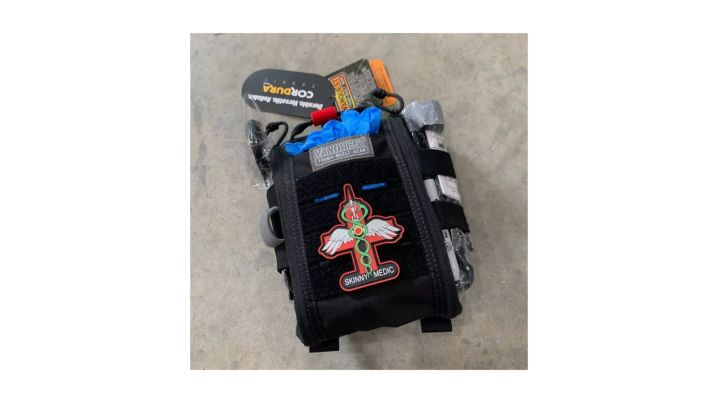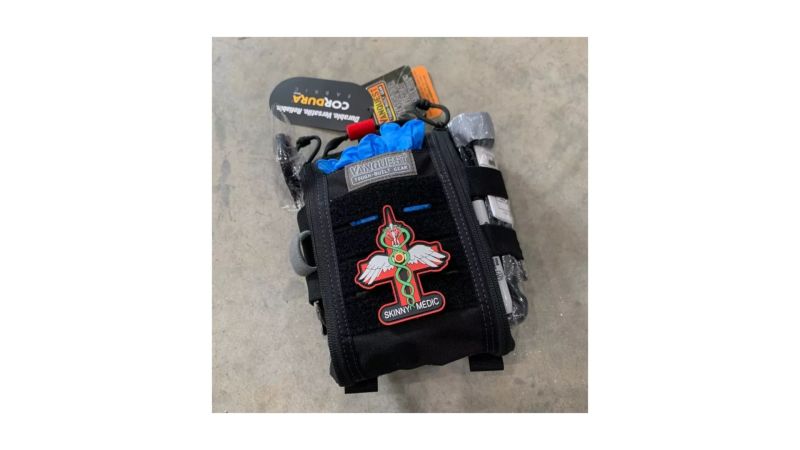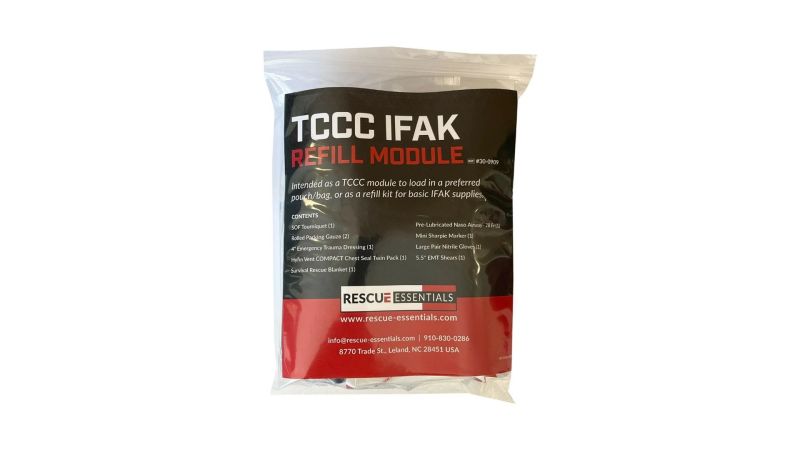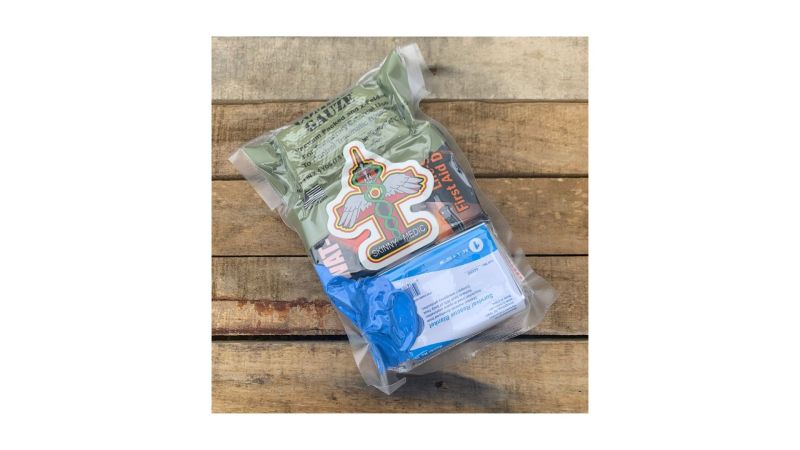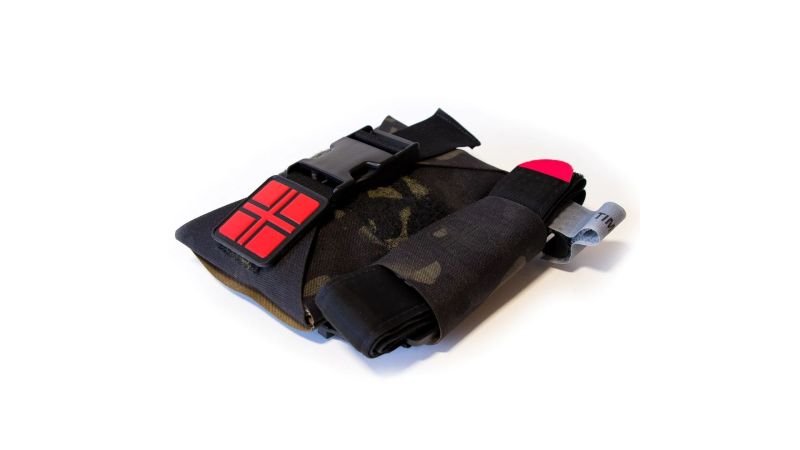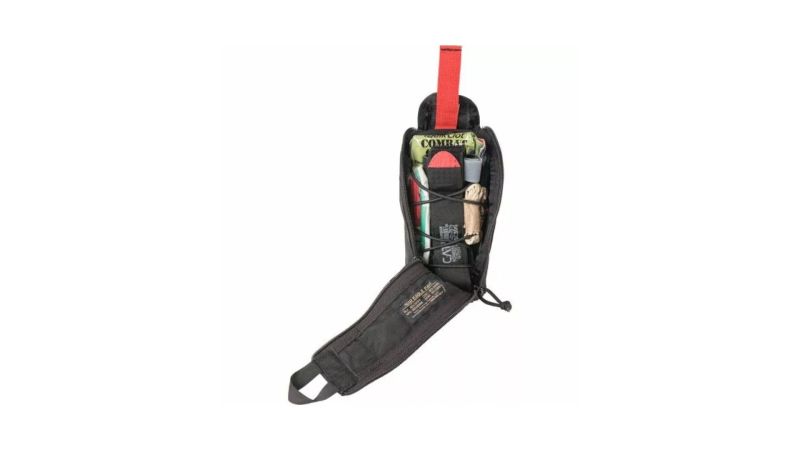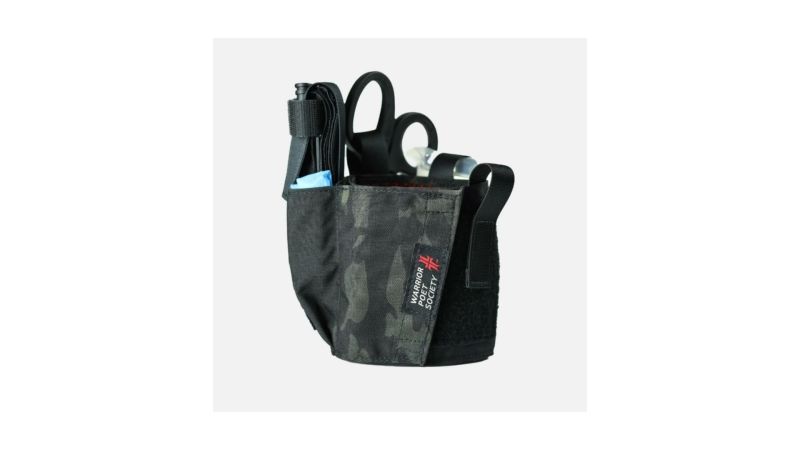We may earn revenue from the products available on this page and participate in affiliate programs.
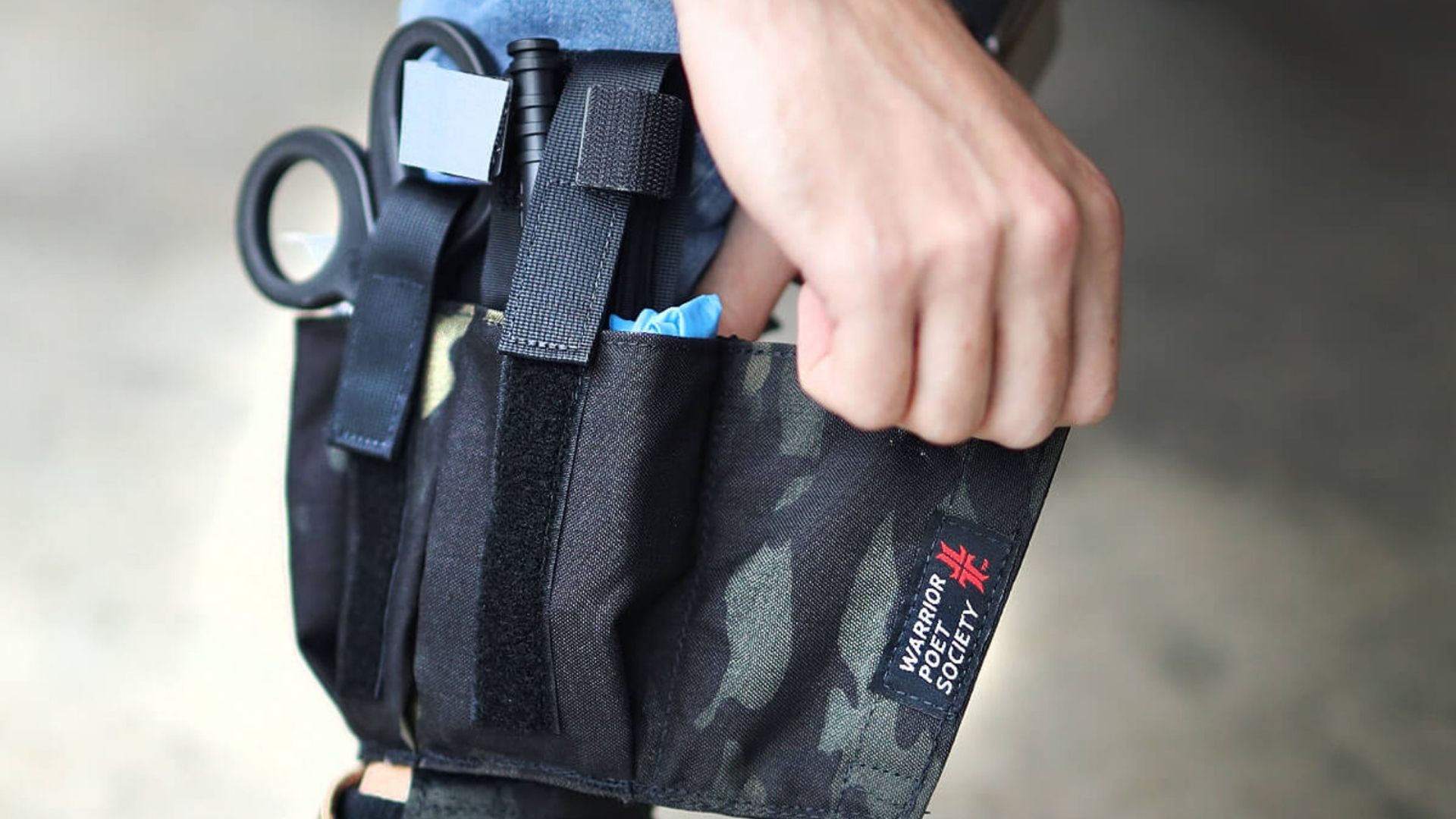
Blow-out kit. Trauma kit. IFAK. Whatever name you choose to call it, only the best will do when someone’s life is on the line. A relatively recent addition to the average infantryman’s basic kit, individual first aid kits (IFAKs) are stocked with critical equipment to treat life-threatening injuries. Whether it’s a fun trip to the range, an afternoon of chainsaw work, or an active shooter at an unexpected time and place, life’s odd twists and turns could demand that you have the best training and the best IFAK available to save a life — those that adhere to Committee on Tactical Combat Casualty Care (CoTCCC).
Editor’s Note: Nothing within this article should be seen as medical advice or used for medical training. This article exists for informational purposes only.
- Best Overall: Medical Gear Outfitters Civilian Trauma Kit
- Best Budget: Rescue Essentials TCCC IFAK Refill Module
- Best Compact Kit: Medical Gear Outfitters Micro Trauma Kit
- Best for Battle Belt: Live the Creed Responder IFAK
- Best for Plate Carrier: North American Rescue Eagle IFAK
- Best Ankle Kit: Warrior Poet Society EDC Ankle Medical Kit + Medical Components Pack
Best Overall
Medical Gear Outfitters Civilian Trauma Kit
Best Budget
Rescue Essentials TCCC IFAK Refill Module
Best Compact Kit
Medical Gear Outfitters Micro Trauma Kit
Best for Battle Belt
Live the Creed Responder IFAK
Best for Plate Carrier
North American Rescue Eagle IFAK (Advanced Life Support)
Best Ankle Kit
Warrior Poet Society EDC Ankle Medical Kit
Things to consider before buying an IFAK
Medical training
Before buying an IFAK, get trained on how to use it. If you have no idea what a nasopharyngeal airway is or how to use a tourniquet properly (Hollywood knows nothing about saving lives), then an IFAK likely will be a complete waste of your money while simultaneously endangering your life and freedom. Good Samaritan laws protect trained individuals against lawsuits, but anyone providing medical care that is outside their level of training can, and most likely will, be sued and imprisoned. Of course, you can’t sue yourself (last I checked), but you certainly can unintentionally end your own life. Get proper training. Also, remember that you are much more likely to have to save someone’s life with an IFAK than with your peashooter.
Types of IFAKs
First things first, let’s define some terms. The original IFAK (individual first aid kit) was created for battlefield grunts, so a true IFAK is designed specifically for combat applications. As such, these med kits (sometimes called “trauma kits”) will possess a very specific list of contents and nothing else. That said, other “IFAKs” also exist on the civilian market.
Civilian IFAKs usually provide enough medical equipment for at least one individual, and in some cases, it may be tailored to specific activities, such as hunting or camping. Of course, this creates a marketing free-for-all and a nightmare for undiscerning buyers. Sometimes, civilian IFAKs meet (or exceed) the same standards as military medical kits, but other times, a so-called “IFAK” is merely a boo-boo kit in a MOLLE pouch. As with any life-saving equipment, always pay close attention to the details.
Key features of an IFAK
By its very nature, an IFAK is compact, lightweight, and ready to roll at a moment’s notice. As such, these medical kits should be easy to carry, easy to access, and tough enough to resist the elements and rough handling. Specific contents also determine whether a first aid kit lives up to the IFAK name or not.
Usually, IFAK contents are built using the TCCC memory aid “MARCH”, which stands for:
- Massive hemorrhage (life-threatening bleeding)
- Airway (obstructed airway)
- Respiration (pneumothorax, tension pneumothorax, and open chest wounds)
- Circulation (non-life-threatening wounds, bleeding, and broken bones)
- Hypothermia (and trauma effects)
At a bare minimum, a trauma kit version of the IFAK will include the following equipment designed to tackle the first two MARCH elements: tourniquet, compressed wound packing gauze, hemostatic gauze, compression bandage, nasopharyngeal airway (NPA), chest seals, trauma pads, etc.
More advanced kits will include items for handling “C” and “H” concerns, while others (controversially) will include a decompression needle to address respiration issues. IFAKs also commonly include non-latex surgical gloves (ideally two pairs or more), adhesive tape (medical or duct tape), shears, a permanent marker, and one or two other practical odds and ends.
Editor’s Note: ALWAYS OBTAIN PROPER TRAINING before using a tourniquet, NPA, decompression needle, chest seals, or other specialized medical equipment. These supplies cannot magically create skill sets during an emergency; improper use of emergency medical equipment can kill a patient rather than save them. There is no practical or legal substitute for in-person emergency medical training from a properly trained and certified professional.
IFAK pricing
True IFAKs are pricey medical kits, but when viewed as an insurance policy, they are an impressive bargain. The most basic kits (i.e., those that adhere to TCCC care standards) start out around the $75 mark. Upgraded kits often run somewhere between $120 and $130, give or take, while advanced medical kits, such as those with decompression needles, start out around $150, with some ringing up at an eye-watering $200 or more.
FAQs about IFAKs
Q: What is the difference between IFAK and AFAK?
A: IFAKs are for G.I. Joes and the average Joe; AFAKs are for professional first responders. An IFAK (individual) is designed to provide emergency trauma care to a single individual. An AFAK (advanced) provides the same capabilities as an IFAK, and then some. They usually may contain items such as defibrillators, medications, and advanced airways.
Q: If I already have a first aid kit, do I need an IFAK?
A: A traditional IFAK is designed to be compact and lightweight with easy access to essential life-saving equipment. If your first aid kit does all these things, then you likely do not need to replace it with an IFAK. That said, multiple IFAKs never hurt.
Q: What is the most important life-saving item in the IFAK?
A: Ultimately, the answer depends on the patient’s condition.
Q: How do you use the IFAK tourniquet?
A: See the “Medical Training” section above.
Q: Where does the IFAK go on your body?
A: IFAK placement depends on the individual user and their kit/loadout. For grunts, that might be a belt or plate carrier. For civilians, that might be a pocket or ankle.
Final thoughts
Not everyone is properly trained to use an IFAK, but those who are can benefit greatly from the Medical Gear Outfitters Civilian Trauma Kit. This medical kit was designed for trained civilians and off-duty door kickers who want to be prepared for anything. The included equipment makes for an impressive kit straight out of the box, and thanks to multiple pouch options and extra cargo space, this kit is easy to customize for virtually any application.
Methodology
First aid kits come in all shapes and sizes, and with a little bit of thought and training, you can even build your own. That said, IFAKs are an entirely different animal. With access to the right supplies, one certainly could build their own trauma kit, but for most of us, a pre-built kit makes the most sense. Unlike more basic first aid kits, true IFAKs are built to specific standards, namely those put out by the DoD’s Committee on Tactical Combat Casualty Care. That said, internet retailer listings abound for low-quality kits that ship from China and masquerade as “tactical” first aid kits.
To differentiate between killer med kits and killing med kits, I relied on my own emergency medical training, but when I hit my limits, I turned to TCCC standards (conveniently outlined with the “MARCH” acronym) and professional SWAT team paramedics to sift through the mess of junk online. While there are many good sources of information, these informational videos by SkinnyMedic and this MARCH breakdown by PerSys Medical filled the gaps in my own knowledge and training. SkinnyMedic and PrepMedic also provided some incredibly valuable product reviews so I could more easily extract the gold from the ore.
Check out the Task & Purpose review guidelines for more information on our review process.
